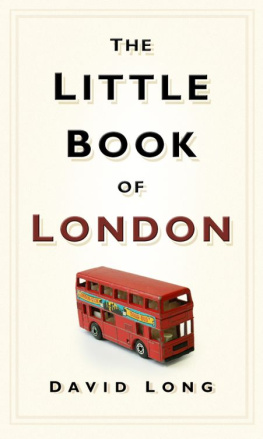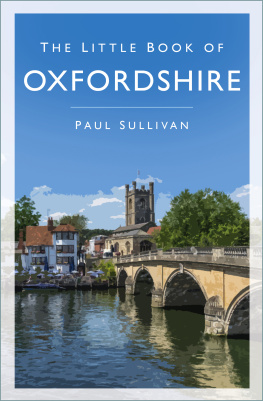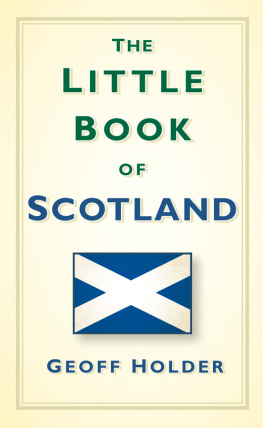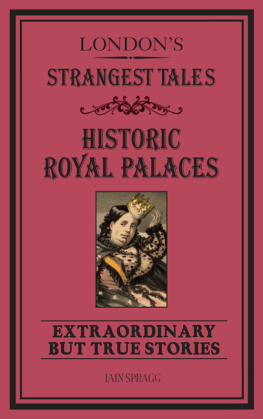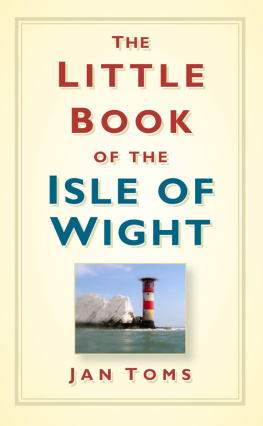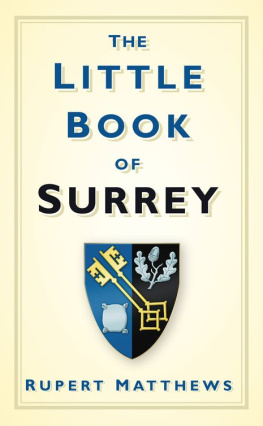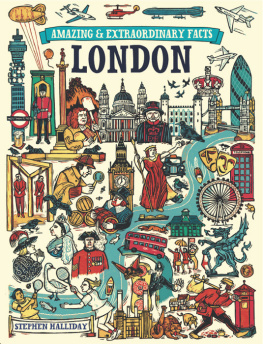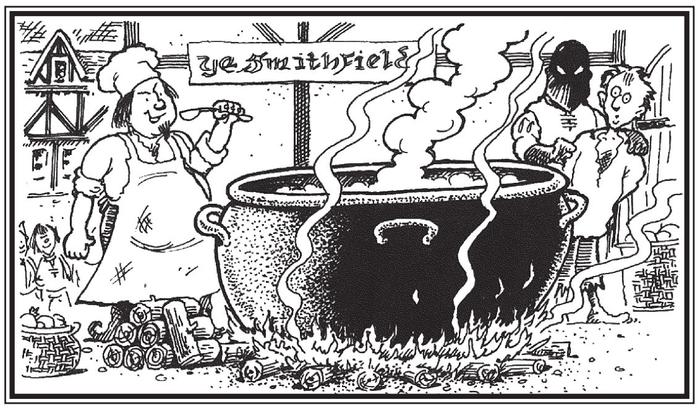I ts a city most Londoners think they know pretty well, and one with which most visitors quickly feel familiar. Yet the truth is that some of the most fascinating, frivolous and bizarre facts about London all the really important stuff, in other words are the ones most people simply never get to hear about. Stuff they dont even realise they dont know. Stuff like this:
Arriving in London from Oxford in 1662, Christopher Merrett demonstrated how to make champagne at a meeting of the Royal Society, doing so a full thirty years before Dom Perignon managed to do it in France.
When 1960s guitar legend Jimi Hendrix moved into Brook Street and found he was living next door to Handels Mayfair mansion he went straight out and bought himself a recording of the Messiah.
Never mind that dodgy kebab, the most unappetising meal ever served in London was almost certainly the inaugural dinner of the Society for the Acclimatisation of Animals in the United Kingdom in 1862. The menu included rhino pie and porpoise heads, panther cutlets, kangaroo steak and stew, and Japanese sea-slug soup.
The earliest known reference to mud-wrestling in London was in the 1730s when bouts were regularly held in the pleasure gardens at Belsize Park. Eventually the revels got so out of hand the place had to be closed down in 1745.
The worlds first ever traffic island was installed in 1864 so its inventor Colonel Pierpoint could cross the street to reach his club. Unfortunately when he turned to admire his creation the Colonel tripped over and was knocked down by a cab.
By 1900 there were nearly 300,000 horses employed in the capital. Eating up to a million tons of food a year between them, each one deposited three to four tons of dung on the capitals crowded streets.
Lost property handed in to London Transport personnel over the years has included a lawnmower, several silicon breast implants, a bishops crook and a puffer fish, an outboard motor from a boat, an entire garden bench, a sealed box containing three dead bats, an artificial leg, several glass eyes, one stuffed gorilla, two human skulls in a bag, a wheelchair and a wedding dress. Each year approximately 7,000 mobile phones are left behind on tube trains and buses, together with an average of two bikes a week.
In 1868 Londons first ever traffic light blew up killing a policeman and causing a passing platoon of cavalry to stampede.

With a range of 30 miles, the main guns of HMS Belfast are targeted on Barnet and if fired would destroy Scratchwood Services on the M1.
B EHEADINGS, B URNINGS & H ANGINGS
When Charles IIs illegitimate son, the Duke of Monmouth, was executed for treason in 1685 it took executioner Jack Ketch five blows of the axe and the job still had to be finished off with a knife. The two halves were apparently then promptly recovered in order that his severed head could be sewn back on and the corpse made to sit for a royal portrait.
In the days when hangings at Tyburn were routine, the gallows (which stood on a spot near the south-west corner of modern Connaught Square) could accommodate twenty-one men or women at a time. Convention dictated the order of precedence so that highwaymen as the aristocrats of crime were despatched first, then common thieves, with traitors being left to bring up the rear.
During the long procession from Newgate Gaol in the City to the so-called Tyburn Tree, the condemned were presented with scented nosegays by crowds which could number up to 10,000. Convicts could also enjoy a last drink at a tavern, The Masons Arms, which is still standing in Seymour Place.
French watchmaker Robert Hubert was hanged at Tyburn after confessing to responsibility for the Great Fire in 1666. Needless to say it was a stitch-up, but in fact the death penalty was routine for setting fire to even a single building at this time, never mind 13,200, and remained so until 1861. (Quite a thought today when an estimated 25 per cent of all London fires are started deliberately.)
By 1688 fewer than fifty offences carried the death penalty but under the Hanoverian kings the number was increased to around 300. Largely implemented to reduce the cost of incarcerating offenders, typical among the new capital crimes were the theft of 5s, causing damage to Westminster Bridge and even impersonating a Chelsea Pensioner.
Restored to its original, pristine elegance and repositioned close to St Pauls, Temple Bar originally provided a convenient place to display the bloody, decapitated heads of traitors. Those of the Rye House Plotters in 1683, for example, were boiled in brine and cumin seed to prevent them being pecked at by birds, after which bystanders could pay a hapenny to hire a telescope to enjoy a really close look at the gory remains.
Londons own death row moved to Pentonville Prison in 1902 when the dreaded Newgate finally closed. Between then and 6 July 1965 when the practice was finally abolished, Crippen, Christie and 118 others were executed here and are still buried beneath the prison garden. The last condemned cell is now a staff room for the probation service.
In days gone by hanging was considered quite humane. Until 1753 women found guilty of murdering their husbands could expect to be burned at the stake instead, although kindly attempts were sometimes made to strangle them before the flames took hold. As late as 1789 Catherine Murphy was despatched in this way, though in her case it was for coining, i.e. counterfeiting or clipping the coin of the realm.
It was not unknown for some felons to escape the drop altogether. John Half-hanged Smith earned this soubriquet in 1705 by taking so long to die that the crowd demanded he be cut down and let loose. Patrick OBryan was similarly reprieved but on being set free made the mistake of going back to murder his accuser. Back in the dock he was boiled in pitch to ensure the same thing wouldnt happen again.
In 1531 a man called Rouse was boiled alive at Smithfield, a fitting end for a chef. Cook to the Bishop of Rochester, he had been found guilty of accidentally murdering several colleagues while attempting to poison his employer. Boiling for poisoners, however, was removed from the statute books seventeen years later.
Under the 1752 Murder Act the Company of Surgeons and St Bartholomews and St Thomass hospitals were each entitled to ten hanged corpses a year for the purposes of dissection and anatomising. Punch-ups frequently broke out when their representatives attempted to claim the bodies, however, because for many dissection was considered to be an ignominy too far.
The largest crowd ever assembled in London for a public execution was that which gathered outside Newgate on 30 November 1824 to see a sentence of hanging carried out on Henry Fauntleroy. An estimated 100,000 people thronged the streets to see the banker die after being convicted of attempting to defraud the Bank of England of 250,000. Money he squandered, which seemed somehow to make the offence even worse.

